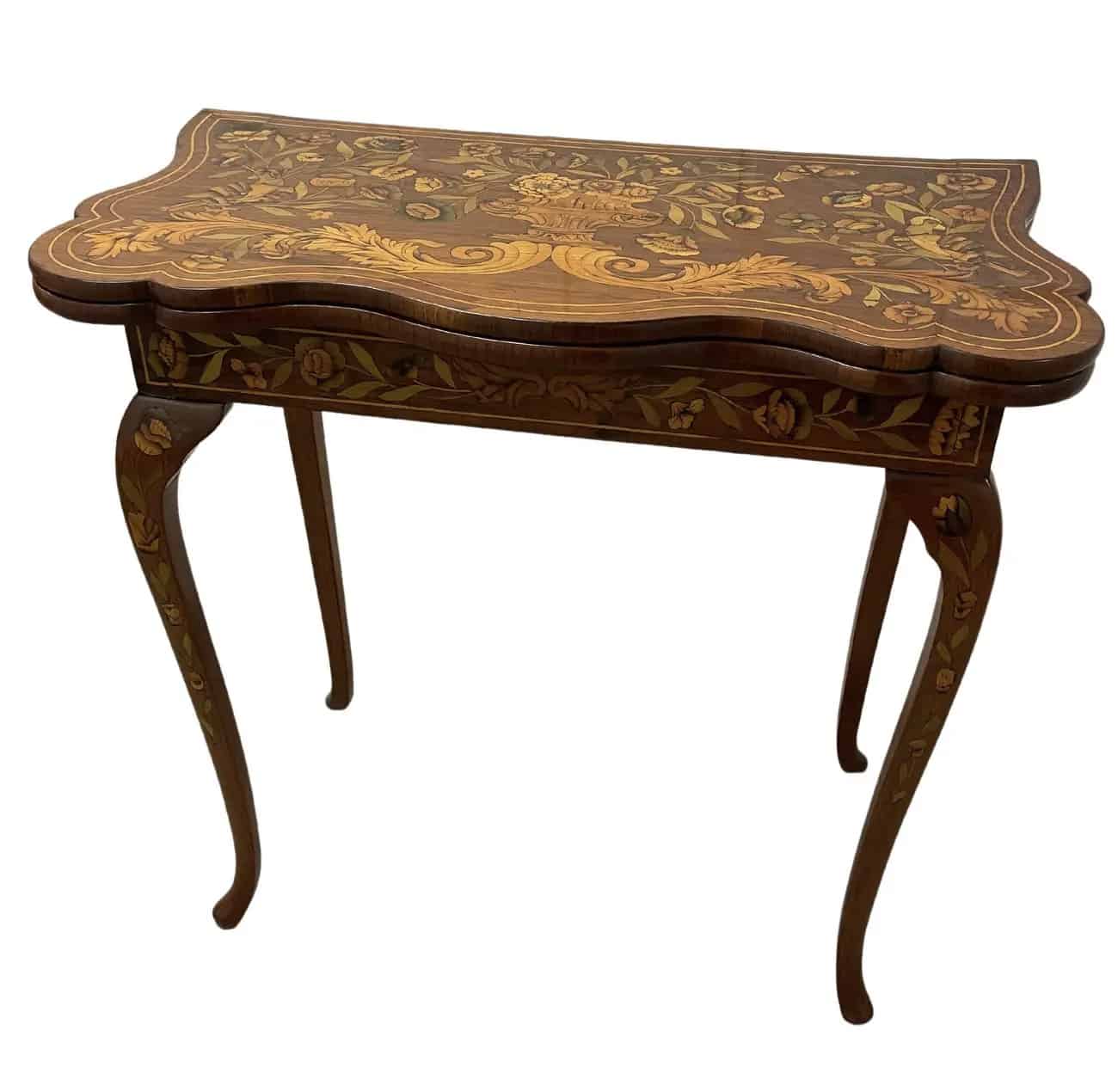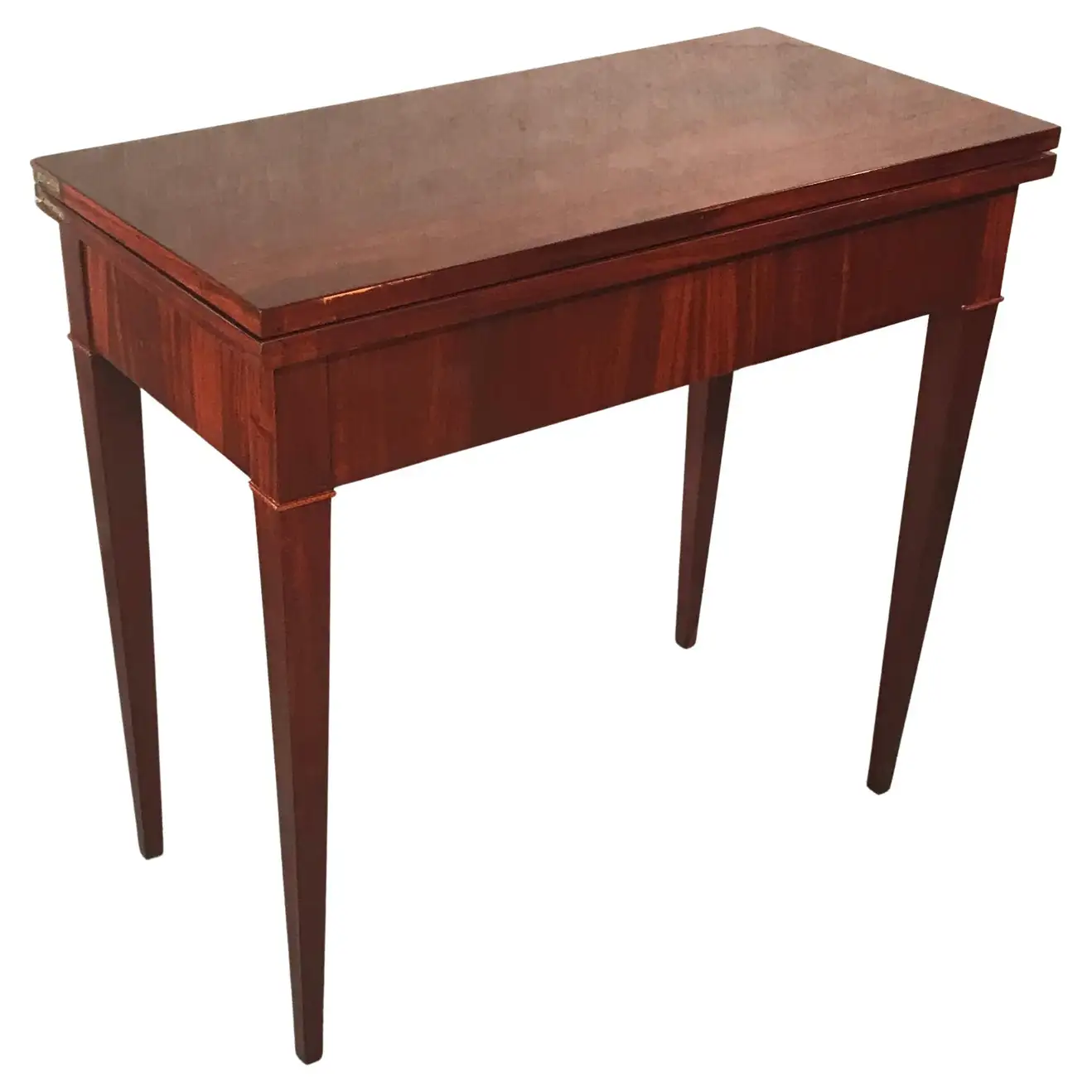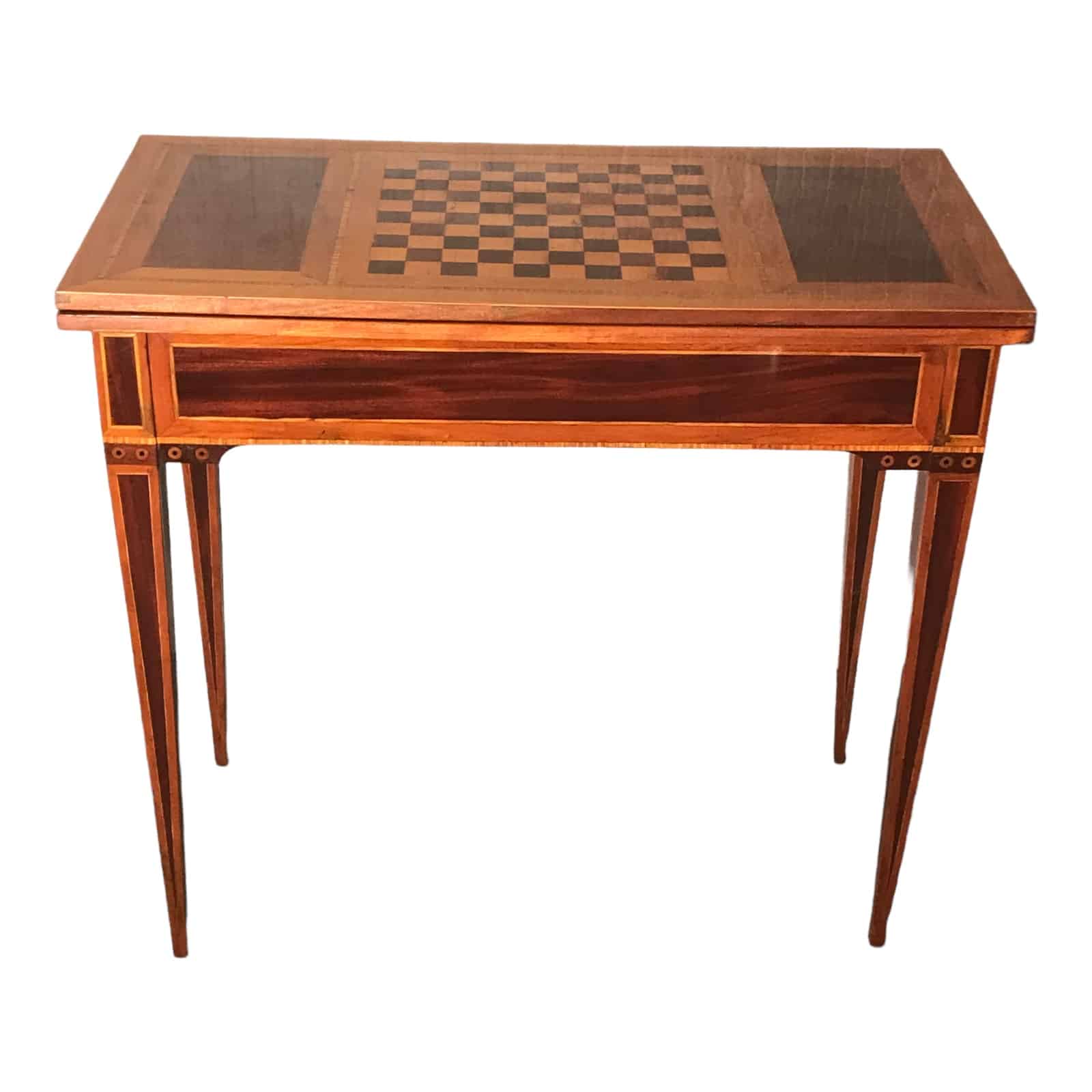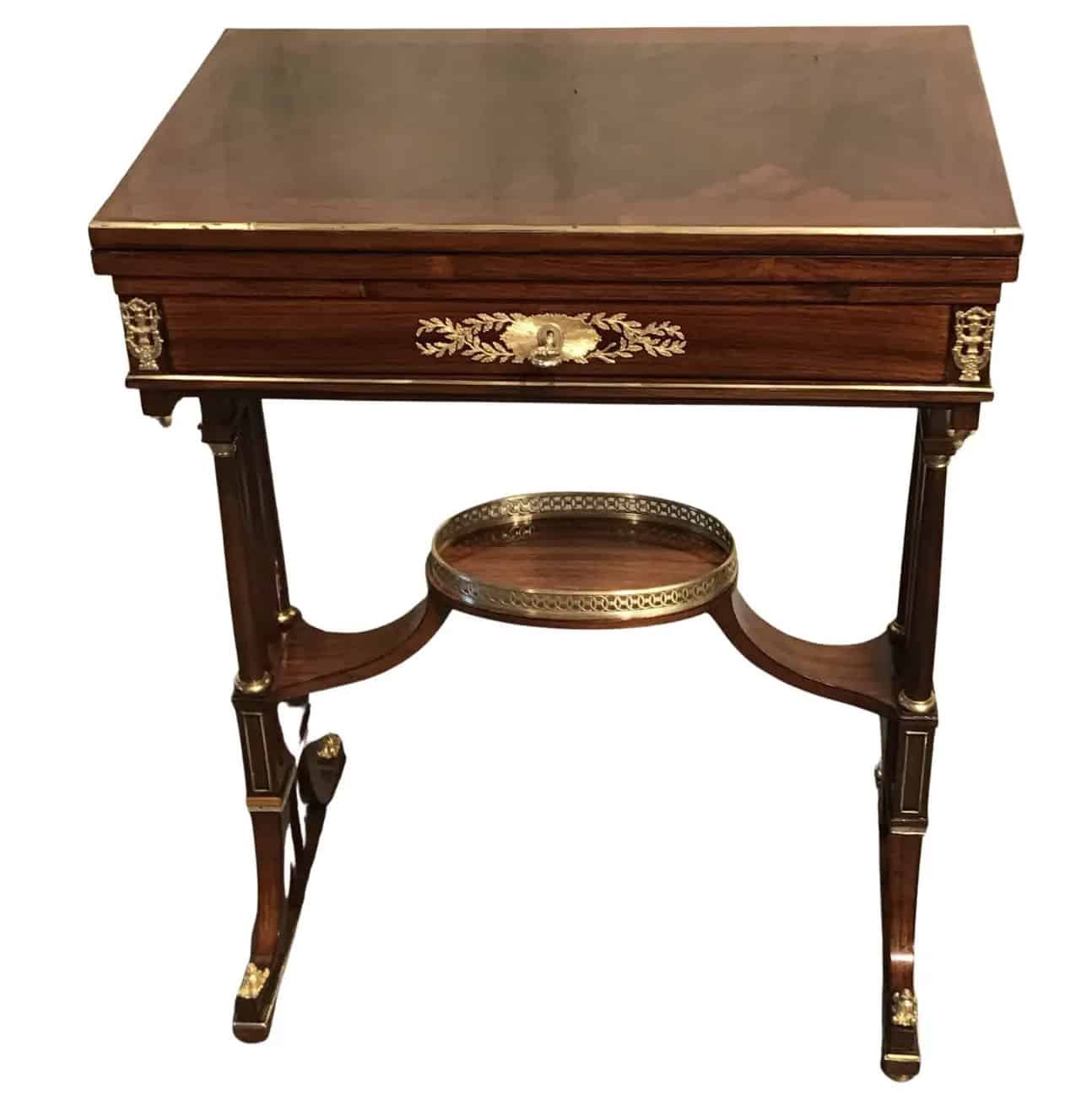#Antique #Card #Tables #History #Card #Games
Card Games have always been an integral part of human leisure, community, and fun throughout history. The origin of card games dates back centuries, with traces back to ancient China, where they were believed to have been invented during the Tang Dynasty (618-907 AD). The first documented evidence of playing cards in Europe dates to the late 14th century, appearing in various countries like Spain, Italy, and Germany. As card games developed, so did the surfaces upon which they were played. Antique Card Tables are a stunning relic from the development of card games throughout history.
This Sep., Styylish is carrying a stunning selection of card tables, with unique options for your next antique addition!
Courtly and Aristocratic Culture’s Impact on Card Games
Card games made their way to Europe, they became deeply ingrained in the courtly culture of European aristocracy. Royalty and nobility often hosted lavish gatherings where card games were a central activity. Playing cards was highly fashionable and considered sophisticated and refined. People aspired to adopt the leisurely habits and social practices of the upper classes, and the upperclass’ love for card games trickled down classes. These gatherings were opportunities for networking, forming alliances, and displaying one’s status and etiquette.
Empire Style Card Tables
This unique, antique Empire-style card or tea table dates back to around 1880-1900 and comes from Vienna. This stunning piece is a symbol of the court’s refinery, who likely would have played cards on a table like this. This piece has an elegant mahogany veneer and gorgeous bronze fittings with a fold-out top. Further, the center of the unfolded top is covered with green leather, providing a perfect surface for playing cards.
Game Evolution and Standardization in the 18th Century
Though card games have been around for thousands of years, the 18th century was an important period of time in which the rules of many card games became standardized, with rules and variations specific to regions. Games like Whist, Quadrille, and Piquet gained popularity during this time, reflecting the evolving gaming culture and preferences.
Additionally, the 17th and 18th centuries saw an increase in the publication of numerous rulebooks and treatises on card games. These publications standardized the rules and increased awareness of different games, making it easier for games to be taught, and to be spread throughout regions. As games spread throughout regions across Europe, each country imposed its own unique flare on the styles of game tables.
Dutch Card Tables
This unique Dutch marquetry card table dates back to the second half of the 18th century. One of the most popular Dutch card games during this period was Klaverjassen. Klaverjassen is a trick-taking game for four players in partners. Players compete to score points by capturing specific cards in tricks.
The card table likely facilitated many games of Klaverjassen and has gorgeous marquetry details on the top. Flowers and birds decorate this exquisite piece. This piece can be used as a console table in daily use, and open the top for card games. The unfolded top rests on a fold-out leg in the back. It has an updated smooth, beige leather surface in the middle. Also, the card table has a very pretty marquetry decor on the wooden frame with playing card marquetry in each corner.

French Directoire Card Tables
This French mahogany card table dates back to around 1800-10 and provided the optimal surface for cards and gambling of all kinds with its fold out top. It is has a decorative mahogany veneer and four pointed legs. This table hosted games of écarté, and trente et quarante, and could also easily be folded up for use as a console table. The simple design makes it suitable for a home of diverse styles and provides a surface for hours of fun.

Diplomacy and Politics at the Card Table
Not only were card games just for fun and leisure, but they often played a role in diplomatic and political settings. Important discussions and negotiations would often take place during card games, offering a less formal environment for diplomats and statesmen to interact. Diplomats, businessmen and politicians often made deals and agreements during these games that may have had very important diplomatic and economic outcomes.
Neoclassical Game Tables
In addition to card tables, game tables with built-in chess boards were another popular game table category in Europe. This Neoclassical game table from France dates back to 1810-20. It showcases an elegant inlaid ribbon frame and chess board on the tabletop. The table can also open up to reveal a green felt top for card game playing or writing. Additionally, the antique table has a drawer to store game pieces. Chess’s enduring appeal lies in its complexity, requiring strategic foresight, tactical maneuvers, and a deep understanding of the game’s dynamics. Chess is a timeless and revered intellectual pursuit for diplomats and laypeople alike.

Card Tables: Versatile pieces for any home
Investing in an antique card table adds a touch of timeless elegance and historical charm to your home. They are functional pieces that encourage game-playing by providing a designated space for card games and also enhance your home’s decor. These tables boast exceptional craftsmanship and unique designs, showcasing the artistry of bygone eras. Moreover, antique card tables often retain or appreciate in value over time, making them not only a beautiful addition to your home but also a potential investment.
Syylish offers a diverse selection of beautifully maintained antique items such as card and game tables to meet all of your interior design needs. With endless options on sale, you’ll find your next piece on Styylish today!



